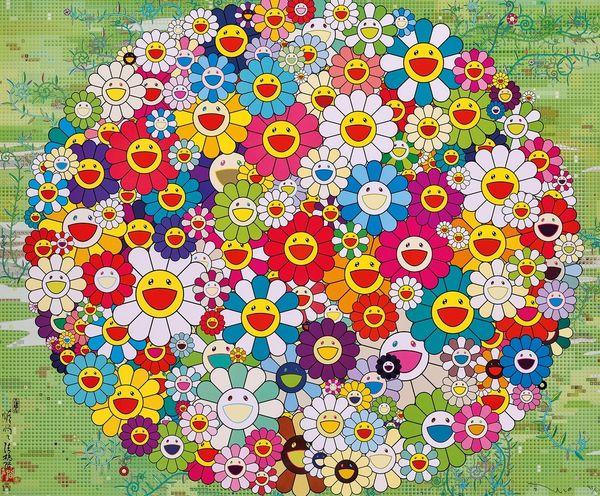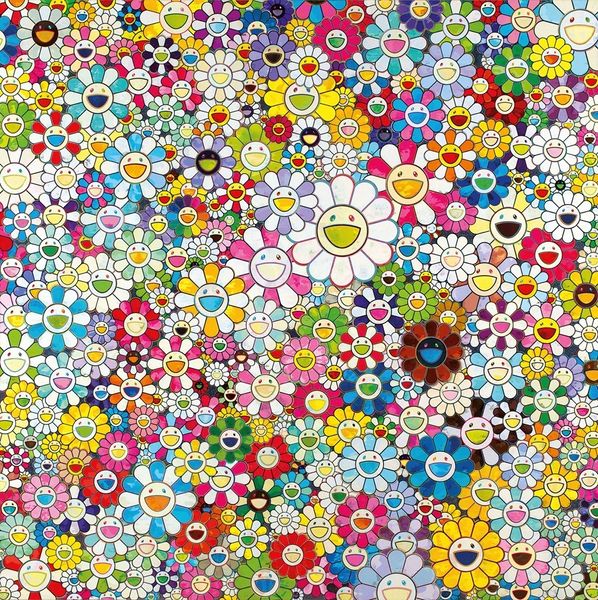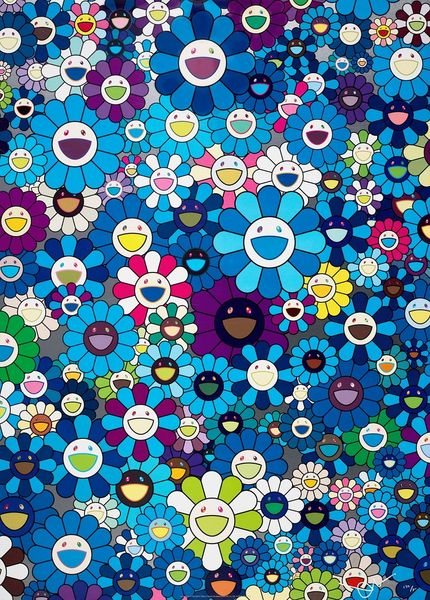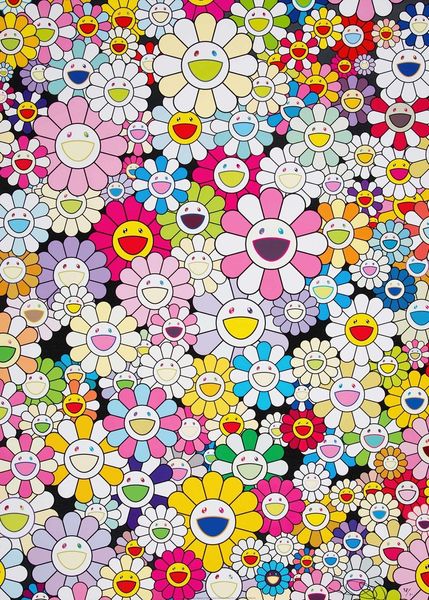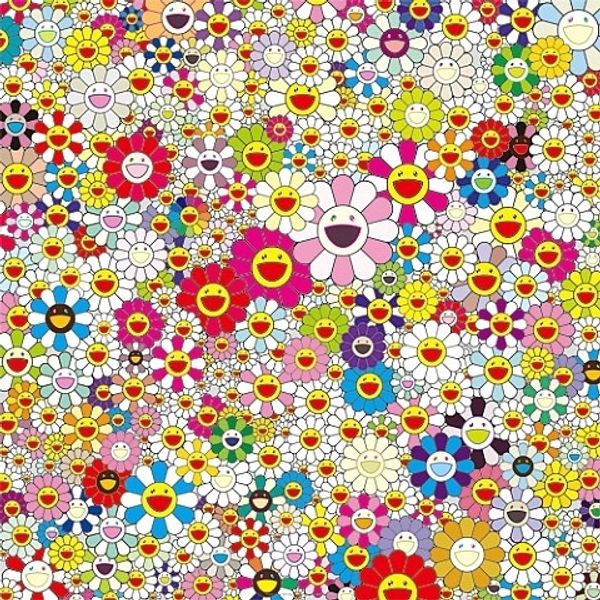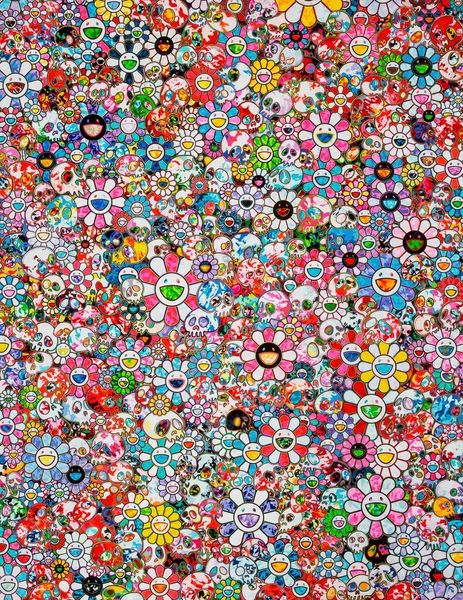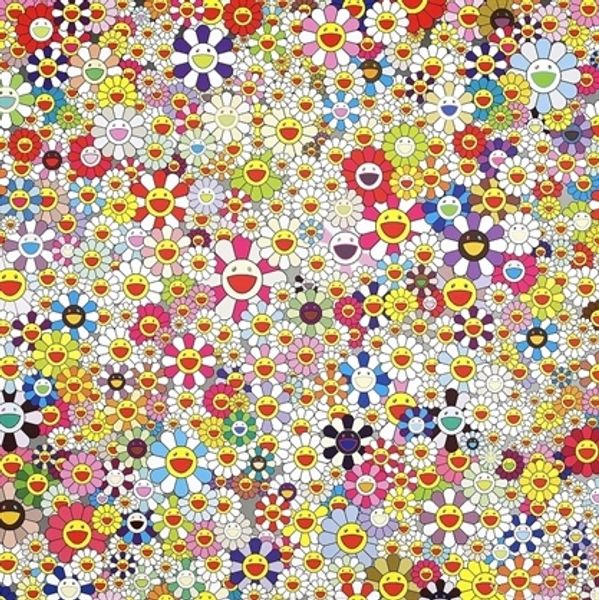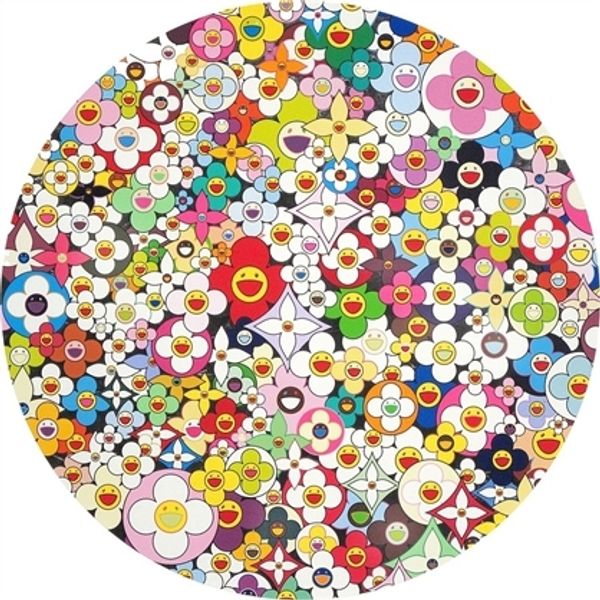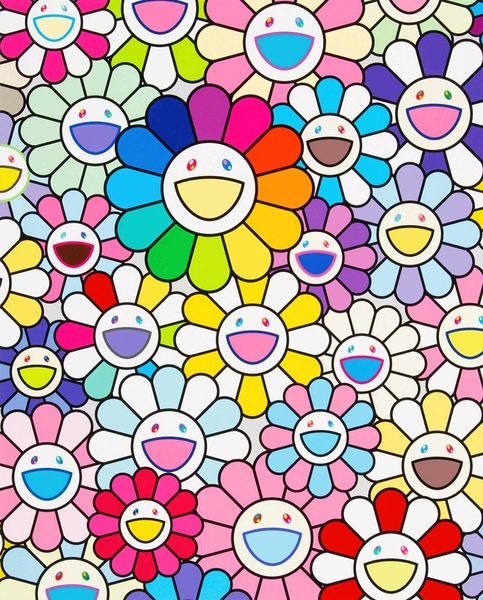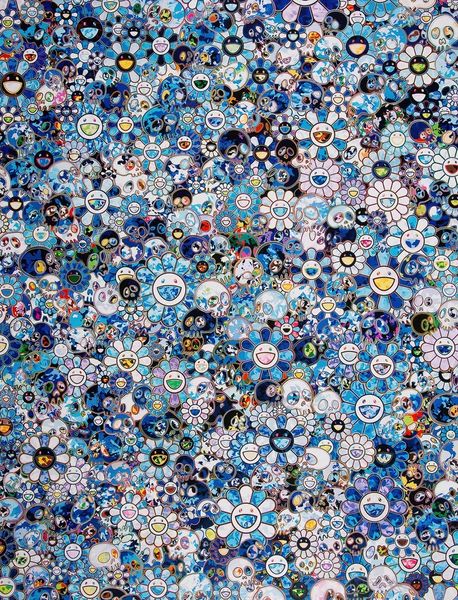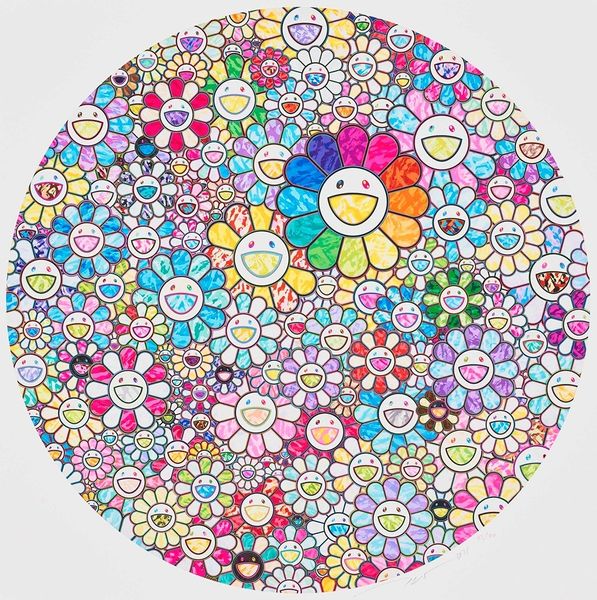
#
neo-pop
Copyright: Modern Artists: Artvee
Editor: We’re looking at Takashi Murakami’s “Korpokkur in the Forest” from 2019, made with mixed media. It’s an explosion of vibrant, smiling flowers, almost overwhelming. What do you see in this piece beyond the initial visual pop? Curator: The flowers are so prominent they immediately seize the viewer. Their smiling faces create this feeling of kawaii, of cuteness, but their sheer volume also evokes something unsettling, almost like an overwhelming force. Don't you find that interesting? Editor: I do! It's like happiness bordering on mania. Is this perhaps a reflection of Japanese culture's response to… perhaps, trauma? Curator: Precisely. Consider the historical weight of imagery in Japan. Flowers, traditionally symbols of beauty and ephemeral life, gain new layers of meaning after events like the Hiroshima bombing, becoming associated with resilience and regrowth. Murakami lived through some major times of disruption in Japan’s economy. How might that inform the art, considering that context? Editor: It's as if he's using these universally happy symbols to mask deeper anxieties or collective trauma. There's a push and pull. The abundance hides something more complex. Curator: And that tension, that interplay between surface and depth, reveals a powerful commentary on contemporary society's relationship with happiness, consumption, and cultural memory. It questions what remains when familiar shapes and signs are decontextualized and overused. Editor: It makes you rethink how you consume images, realizing that happiness isn’t always so straightforward, right? Curator: Right. And how these repeating forms help encode the art with a deeper cultural significance!
Comments
No comments
Be the first to comment and join the conversation on the ultimate creative platform.
